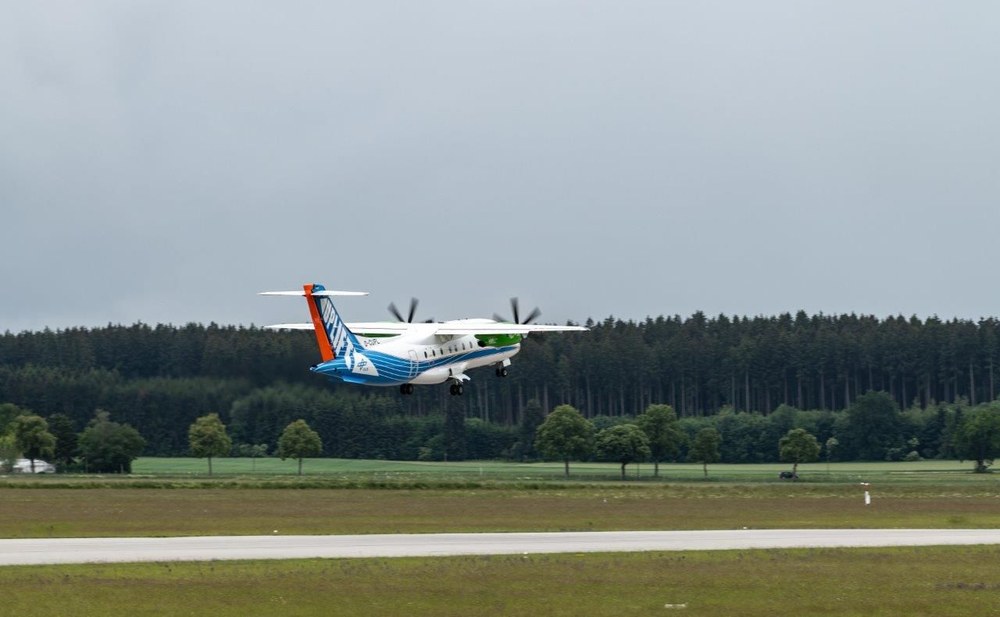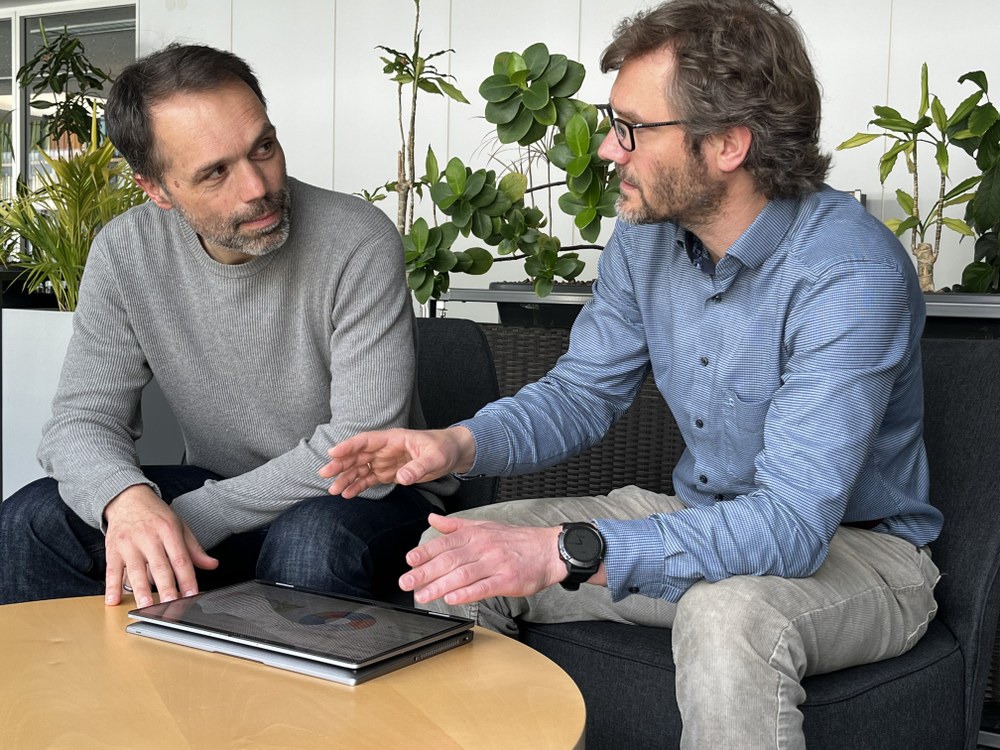Towards climate-compatible aviation – DLR investigates the use of alternative fuels

The German Aerospace Center (Deutsches Zentrum für Luft- und Raumfahrt; DLR) has set itself the goal of making aviation low-emission and therefore climate-compatible by advancing all the existing key technologies – hydrogen, electric propulsion and sustainable synthetic fuels. The flying test laboratory Uplift offers the first opportunity to investigate these technologies together and in various combinations.
The DLR research aircraft D328 UpLift will fly from Oberpfaffenhofen to ILA Berlin 2024 powered by 100 percent synthetic fuel. There, it will be presented to the public for the first time. Specifically, it will fly with a Fischer-Tropsch fuel that, in the future, can be produced using green hydrogen and a sustainable carbon dioxide source as power-to-liquid (PtL). Unlike conventional kerosene, it contains no aromatics – and will therefore emit significantly fewer soot particles into the atmosphere. Although the fuel used in UpLift was not obtained through a PtL process, it is chemically and technically equivalent – known as a proxy fuel or PtL proxy.

On 28 May 2024, UpLift completed its first test flight at DLR's site in Oberpfaffenhofen, powered 100 percent by this proxy fuel on one engine. The flight paved the way for the operation of both engines on the journey to Berlin. The combustion of this fuel is expected to reduce not only soot particle emissions, but also the climate impact of the contrails (condensation trails) emitted.
DLR has been working on alternative aviation fuels since 2008. It began with the EU FP7 project ALFA-BIRD. At the time, Sustainable Aviation Fuels (SAFs) were scarce even in small quantities, which are required for lab- or combustion-rig testing. Four synthetic fuels produced from a fossil feedstock had been selected and procured for second phase testing on engine components, among which the fully synthetic jet fuel (FSJF) produced essentially from Fischer-Tropsch synthesis (FTS).

The comeback of Fischer-Tropsch synthesis
The synthetic fuel production process based on the Fischer-Tropsch Synthesis (FTS) are 'feedstock agnostic'. All possible feedstocks for this fuel production pathway are broken down into a syngas (hydrogen and carbon monoxide), which is the only input material for the FTS reactor. The composition of the final product has no memory of the physical state (gaseous, liquid or solid) and the nature (fossil or renewable) of the feedstock. It was clear from the outset that the technical relevance of a mixture of synthetic fuel molecules for DLR research does not depend on its sustainability certificate, but first and foremost on its chemical composition and thermophysical properties.
For the life cycle assessment (LCA) and the study of the economic viability of different alternative fuel production pathways (including but not limited to SAFs), the necessary input data are often available early in the development, as they stem from process simulations and techno-economic analysis at the system level. However, when it comes to the technical fuel assessment and the in-situ study of its climate and environmental impact – both of which are important DLR research topics – data can only be generated with actual fuel, and then, large quantities are necessary. Fossil synthetic fuels, which can fulfil the volume demand, are thus used as proxy. The comparability of the fuels is ensured through chemical analyses and a comparison using DLR's SimFuel platform, which contains information on more than 15,000 fuels and fuel components and their properties – one of the largest databases of its kind in the world.
An important step – the ECLIF flight measurement campaigns

DLR/NASA/Florian Friz
DLR has organised several major emission measurement campaigns since 2015 under the ECLIF name (Emissions and Climate Impacts of Alternative Fuels). These involved both ground tests and in-situ measurements in flight using a chase aircraft. Researchers in the chase aircraft literally sniffed the exhaust jet – an experiment that required a strong stomach due to turbulence.
During the ECLIF-1 campaign in 2015, DLR used fossil synthetic fuels (semi-synthetic jet fuels and again the fully synthetic jet fuel entirely from FTS) to investigate and quantify the fuel's impact on the main climate forcing effect of aviation. While European commercial SAF production plants were coming online, DLR was able to start with this important research topic by using fossil synthetic fuels as a proxy for future SAFs.

During the second ECLIF measurement campaign in 2018, the team then succeeded in validating the results with a 'real' SAF in collaboration with NASA. Here, a HEFA-SPK mixed with conventional Jet A-1 was used, which was approved just a few days before the tests. The whole team did an exceptional job. The fuel concept and the methods developed on the basis of knowledge gained during ECLIF-1 played an important role. The campaign demonstrated that a reduction in aromatics has a clearly positive effect because it results in fewer contrails. The efforts of all those involved have therefore paid off.
In the latest campaign of the ECLIF series, ECLIF-3 in 2021, DLR and partners Airbus, Rolls-Royce, Neste, NRC Canada and Manchester University performed the first emissions measurements behind a commercial passenger jet (an A350 equipped with RR Trent-XWB) fuelled with 100 percent SAF (HEFA-SPK) in both engines. The knowledge gained in fundamental research and large campaigns by using synthetic fuel proxy was crucial in advancing fuel design and de-risking and optimising the following campaigns using 100 percent SAF.

Uplift – a new chapter begins
The series of tests in the Uplift project, which is funded by the German Federal Ministry for Economic Affairs and Climate Action (BMWK) and operated by DLR, is now building on this long series of extraordinary tests. Large quantities of power-to-liquid (PTL) SAF are not yet available – which is why Deutsche Aircraft's Dornier 328-100 is being refuelled with a fossil, fully synthetic fuel as an e-fuel proxy. Modern aircraft, and in particular their fuel and combustion systems, are developed in such a way that they are able to fly safely with a wide variety of conventional fossil fuels of the Jet A-1 type as well as with SAFs. In the 'UpLift' project, the flying testbed for climate-compatible aviation technologies, DLR will evaluate the advantages of future fully synthetic sustainable PTL-SPK.
These fuels will be the only option for substantial emissions reduction on long-haul flights in the foreseeable future. However, there is still a lot of work to be done before the technology can be brought into industrial production. Our work therefore aims to accelerate the market roll-out of alternative fuels – be it with the construction of the Technology Platform for Power-to-Liquid Fuels (TPP) or with the development of our SimFuel platform, which enables manufacturers to organise their production effectively from the outset.
Tags:
